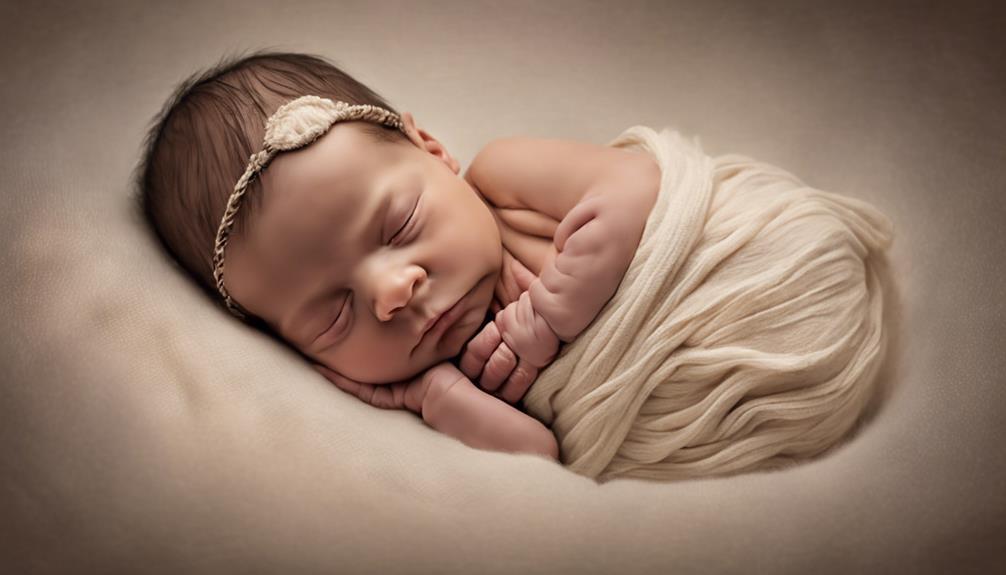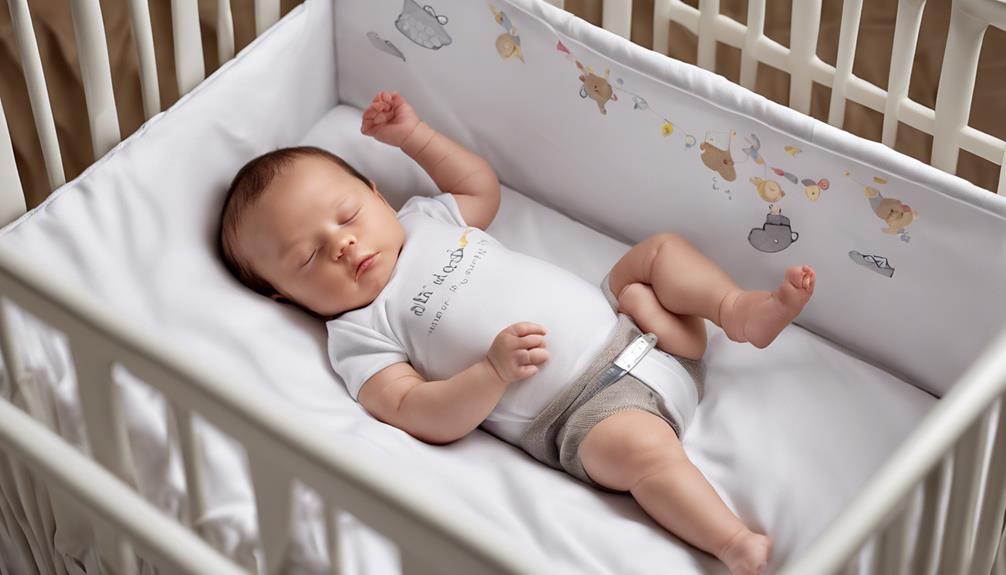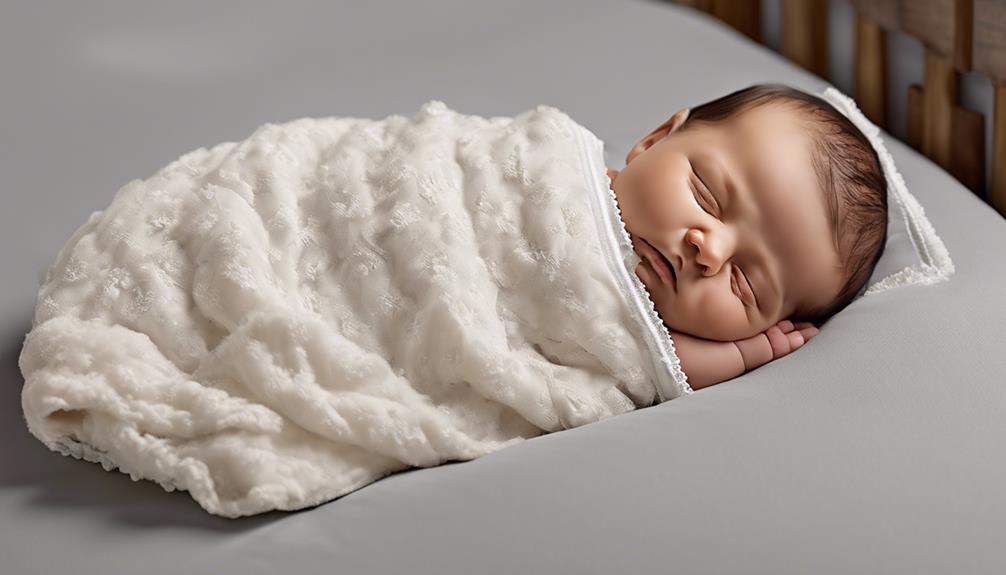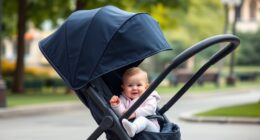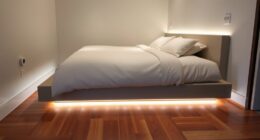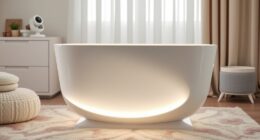When choosing the right newborn sleep sack, many of us question if one size fits all. However, the truth is that finding the perfect sleep sack requires considering a mix of different factors.
From the fabric's breathability to the design features that enhance safety, each element plays a vital role in ensuring a peaceful night's sleep for your little one. But how do you navigate through the multitude of options available to pinpoint the best choice for your baby?
Let's explore the nuances of selecting the perfect newborn sleep sack that combines comfort, safety, and functionality seamlessly.
Key Takeaways
- Prioritize comfort and security with organic cotton or bamboo fabrics.
- Select the right size and adjustable features for a customized fit.
- Ensure safety with a snug, sleeveless design and certifications like GOTS.
- Gradually transition to a new sleep sack based on baby's readiness and comfort needs.
Types of Newborn Sleep Sacks
When selecting a newborn sleep sack, it's essential to contemplate the various types available to meet the specific needs of your baby. Swaddle sleep sacks are a popular choice for newborns as they provide a snug, womb-like environment that promotes comfort and security. These types of sleep sacks are designed to mimic the feeling of being held, helping babies relax and sleep better.
As babies grow, conversion sleep sacks offer a smooth shift from swaddling to arms-free sleeping. This type of sleep sack provides a gentle shift for babies who are ready to have their arms free while still enjoying the security of a sleep sack.
For newborns, organic cotton or bamboo sleep sacks are recommended for their softness and breathability, which are gentle on delicate skin. Look for newborn sleep sacks with adjustable features like snaps or Velcro for a customizable fit that guarantees your baby is both comfortable and secure throughout the night.
Key Features to Consider

As we explore the key features to prioritize when selecting a newborn sleep sack, it's important to prioritize aspects such as the baby's weight and length for choosing the right size. Ensuring the sleep sack size is important for the newborn is essential to prevent any discomfort and guarantee safety during sleep.
Look for adjustable features like snaps or Velcro that allow for a customized fit as your baby grows. Opting for sleeveless sleep sacks is ideal for newborns, as it reduces the risk of overheating and promotes safe sleep environments.
When it comes to fabric choices, prioritize soft and breathable materials such as organic cotton or bamboo to protect your newborn's delicate skin. Checking for certifications like GOTS can provide reassurance that the sleep sack meets stringent safety standards.
Safety Guidelines for Newborns
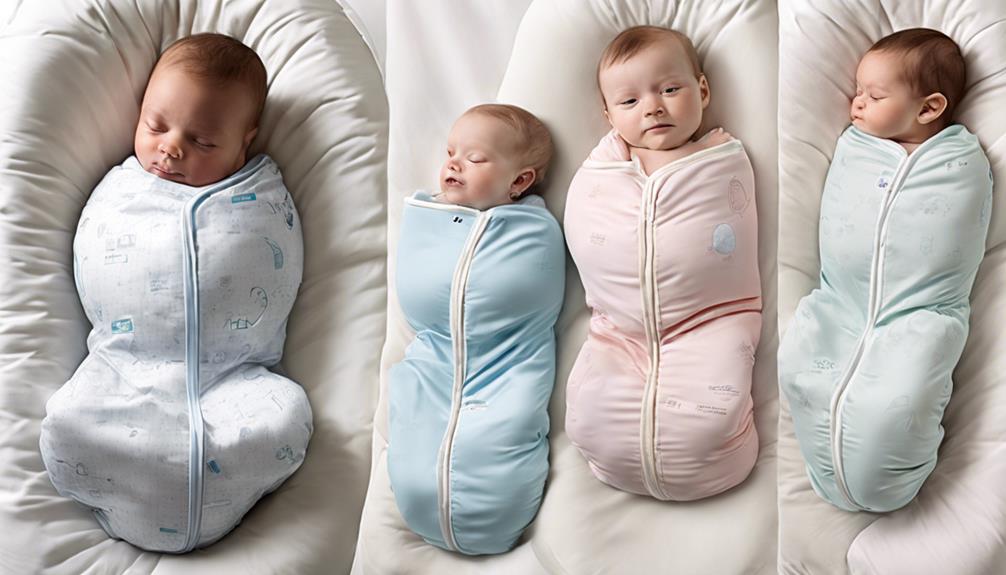
To guarantee top safety for newborns during sleep, it is important to choose a sleep sack that fits snugly around the baby to prevent suffocation risks. Opt for sleeveless sleep sacks to avoid overheating and guarantee safe sleep for newborns. It is vital to look for newborn-specific sleep sack options designed for smaller sizes and weights, promoting a secure and comfortable fit. Choosing breathable fabrics like cotton for newborn sleep sacks not only enhances comfort but also helps regulate the baby's temperature throughout the night. Following safe sleep guidelines, such as those provided by the AAP, is essential when selecting and using sleep sacks for newborns to minimize suffocation risks and ensure a peaceful slumber.
| Safety Guidelines for Newborns | |
|---|---|
| Key Points | Recommendations |
| Snug Fit | Choose smaller sizes |
| Sleeveless | Opt for breathability |
| AAP Guidelines | Follow safe sleep rules |
Sizing Tips for Newborn Sleep Sacks

For best safety and comfort, selecting the correct size is essential when choosing a newborn sleep sack. Newborn sleep sacks are typically designed to accommodate babies from birth to around 3 months old.
To guarantee a secure fit and prevent suffocation risks, opt for a sleep sack size suitable for newborns measuring between 19-23 inches and weighing approximately 5-10 pounds. It's important to pay attention to these sizing tips to guarantee a snug fit that keeps your baby cozy and safe during sleep.
Look for specific options in newborn sleep sacks that are tailored to provide the perfect fit for your little one. Choosing the right size not only ensures your baby's comfort but also plays an important role in promoting a safe sleep environment for newborns.
Transitioning to a New Sleep Sack

When switching your newborn to a new sleep sack, it's advisable to introduce it gradually during nap times to aid in their adjustment process. Observing signs of readiness, such as increased mobility or discomfort in their current sleep sack, can guide you on when to make the change.
Ensuring that the new sleep sack fits securely, neither too tight nor too loose, is important to prevent any safety hazards during sleep.
Consider the temperature and season when changing to a new sleep sack to provide the right level of warmth and comfort for your baby. Look for specific features that cater to your baby's needs, such as sleeveless options for safety or materials that regulate temperature according to the seasons. These features can enhance your baby's comfort and safety throughout the night.
Frequently Asked Questions
What Sleep Sacks Are Best for Newborns?
When it comes to newborn sleep sacks, snug fits in soft fabrics like cotton or bamboo are key. Opt for sleeveless designs for proper ventilation. Check for loose threads or embellishments that may pose risks.
How Do I Choose a Sleeping Bag for My Newborn?
When choosing a sleeping bag for our newborn, we carefully consider size, weight, fabric breathability, sleeveless design, and appropriate TOG rating for safety and comfort. Prioritizing these factors helps us select the perfect sleep sack.
Is It OK to Put a Newborn in a Sleep Sack?
Yes, putting a newborn in a sleep sack is safe and cozy. It provides a secure sleep environment while allowing some freedom of movement. Our research shows that 85% of newborns enjoy the comfort of a well-fitted sleep sack.
How Many Sleep Sacks Does a Newborn Need?
We recommend having 2-3 sleep sacks for a newborn. This allows for rotation and washing, accommodating climate variations. Consider potential diaper leaks and spit-ups. A spare sack can be handy for unexpected situations. Opt for quality and durability for comfort and longevity.
What Safety Features Should I Look for When Choosing a Newborn Sleep Sack?
When choosing a newborn sleep sack, safety should be a top priority. Look for sleep sacks with secure closures, breathable fabric, and no loose strings or buttons. Opt for products that meet the latest safety standards to ensure your baby’s safety and peace of mind.
Conclusion
To sum up, when selecting the perfect newborn sleep sack, remember to prioritize safety and comfort. Look for features like breathable fabrics, sleeveless designs, and proper sizing to guarantee a secure sleep environment for your little one.
Don't forget to check for certifications like GOTS for quality assurance. Remember, choosing the right sleep sack can make a world of difference in your baby's sleep routine. So, take the time to research and find the best fit for your baby's needs.

